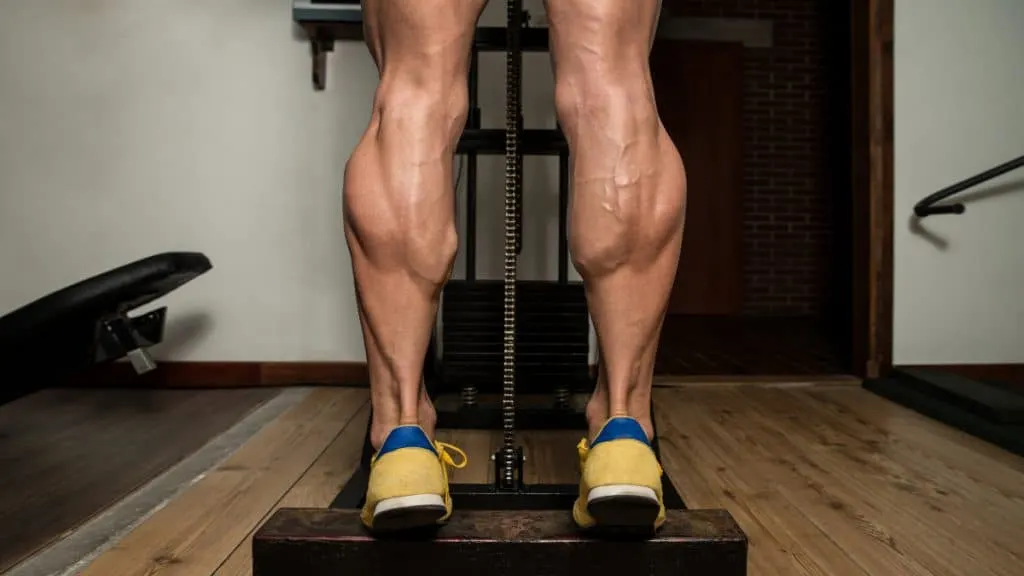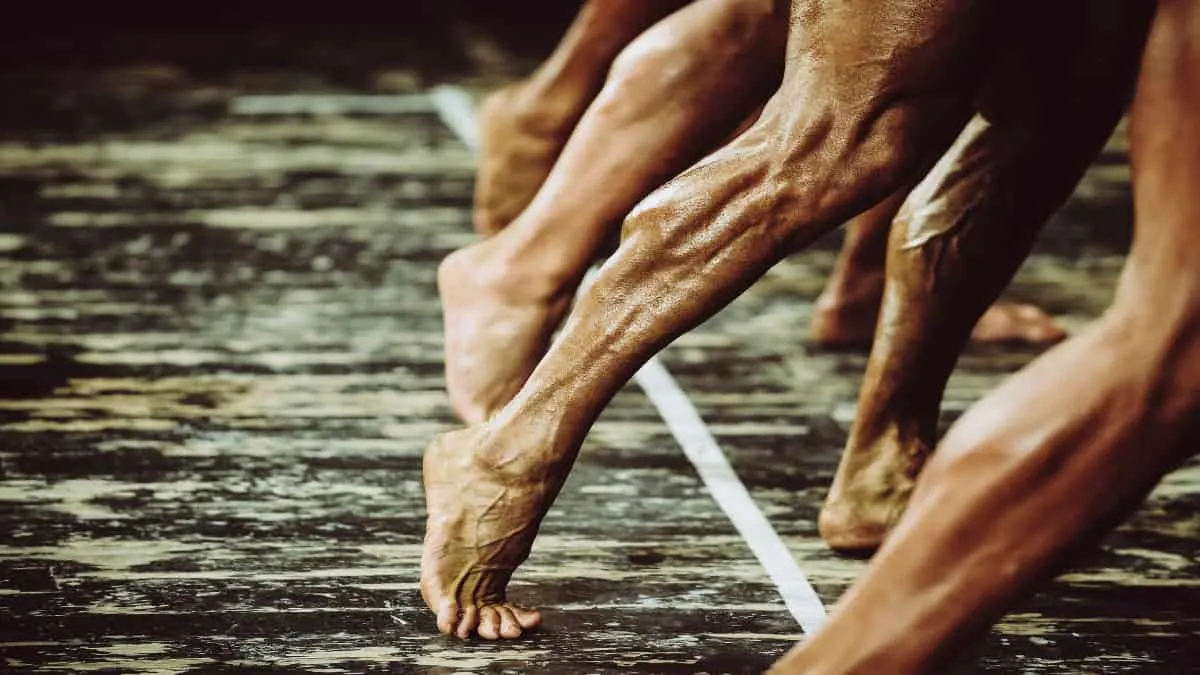Are 17 inch calves big and muscular? Or are they just an average male calf size for men who lift weights and work out?
As you’ll soon learn, few people have lean 17″ calves. Additionally, the individuals who do have a 17 inch calf circumference aren’t always those who lift weights in the gym.
Compare Your Calves:
Are 17 inch calves big?

Are 17 inch calves big or not?
Yes, if your 17 in calves don’t have much body fat around them, then they’re definitely big. To give just one example, most natural weight lifters can train in the gym their whole life without building 17″ calves.
Most people in the general population, except those who’re obese, typically have 15 or 15.5 inch calves at the most. So if your lower legs stretch the tape measure to the 17-inch mark, then that’s strong evidence that you have very well-developed calves indeed.
Of course, if you have loads of excess body fat, then a majority of your calf size may well be comprised of fat. In this case, your calves might look big, but they likely won’t look particularly muscular, at least not in comparison with a pair of lean 17 inch calves. [1]
Can you get 17″ calves without training them?

Yes, you can build 17″ calves or 17.5 inch calves without training them with weights in the gym. In fact, many of the real-life examples of people with 17 in calves are cyclists and athletes who use their calves to aid their sporting performance.
While it might be surprising (and a little frustrating) for budding bodybuilders to hear that a bike rider has bigger calves than them, you also have to understand that cycling is a great way to grow your calves.
Your calves, after all, are just pieces of meat. So it’s not like they can tell whether you’re pumping iron in the gym or pounding the pedals on the road—they just respond to the tension that you put them under.
While bike riders might not obliterate their calves every time they cycle, they’re still training their calves with lots of overall volume, which is what ultimately leads to muscle growth. [2]
Most importantly, cyclists and other athletes tend to train their calves consistently (even if not intentionally) when they engage in their sport/hobby. Many bodybuilders, on the other hand, give up on their calves after a few workouts and then wonder why they won’t grow.
How to get a 17 inch calf circumference
There are three main ways that you can build a 17 inch calf circumference naturally. You may wish to combine all three methods or pick the two that you like the most.
Regular weight training

Regular, progressive weight training is the number one way to grow your calves.
Sure, cycling is excellent for building the calves, but only up to a point.
Hard training bodybuilders and strength athletes are still the people with the best calf development, and these folks are certainly doing a lot more than just cycling (in fact, many of them perform no cardio at all).
Therefore, if you want to build your lower legs, make sure that you’re training them with weights on a weekly basis.
Note that the calves can typically take more of a beating than other muscle groups because they’re already used to supporting your body weight for prolonged periods of time.
So if you want to maximize your calf development and you’re in a calorie surplus (which will help you to recover from training quicker), you can train them 2-4 times per week.
Intense cycling

Although resistance training is the best method for building better calves (for most people), not everyone wants or needs to go to the gym in order to develop their calves.
Some cyclists, for example, have 17 inch calves purely from riding their bike!
Besides being highly effective for sculpting the calves, riding your bike is also a very enjoyable activity and one which may make building your calves less of a chore.
Of course, other sports and activities can build the calves as well. Cycling just happens to be a more accessible calf-building activity than the likes of football and athletics, and it’s one that you can engage in without joining a team.
Bulking and walking

Many overweight people have surprisingly big and muscular calves considering that most of them don’t train their calves directly.
Or do they?
You see, when you have extra body mass (which doesn’t necessarily need to be fat mass), that’s extra weight that your calves now have to support and carry around on a daily basis.
So even though overweight individuals presumably aren’t training their calves in the gym, they are working them more than most people every time they go for a walk (the calves just respond to tension, remember?).
This tension ultimately stacks up over time and, coupled with the calorie surplus that you obviously have to eat in to gain body mass, leads to significant calf growth.
Conclusion: How long does it take to get 17 inch calves?

While some people never need to think about building 17 inch calves because they already have them, this isn’t the case for most people.
The smaller your calves are now, the longer it will take to build them.
Still, presuming that your calves are somewhat normal in terms of development, you can expect to bulk them up to the 17-inch mark in around 18 months if you eat in a calorie surplus, train with good form, and frequently add weight to your exercises.
References
- Do You Know Your Body Fat Percent? (2020, September 4). Verywell Fit. https://www.verywellfit.com/what-is-body-composition-3495614
- Schultz, M. (2021, December 3). The Primary Muscles Used for Cycling and How to Train Them. TrainingPeaks. https://www.trainingpeaks.com/blog/the-primary-muscles-used-for-cycling-and-how-to-train-them/

